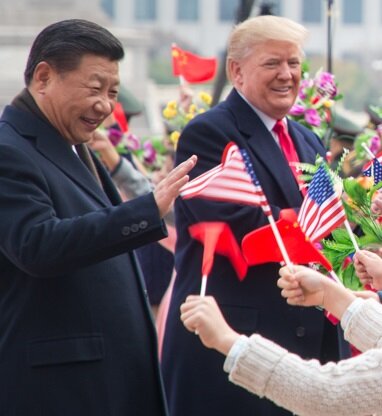U.S.-China Agreement: Round One Goes to China
/As the U.S. and China prepare to sign the “Phase 1" trade deal announced by the White House, it seems clear that China has won this round of the trade war. In addition to the significant self-inflicted economic losses the U.S. sustained from the trade war it initiated, it has magnified this loss by squandering its leverage with a deal which allows China to preserve its mercantilist economic system, continue subsidizing its state-owned-enterprises and imposing other discriminatory industrial policies, while insulating itself from further U.S. tariff increases, at least until after the election.
This failure reflects the Administration’s disastrous “go it alone strategy.” Working with our allies, who share our concerns regarding the China’s non-market practices, would have strengthened our leverage in pressing China for structural change.
The main feature of the deal is China’s commitment to purchase U.S. agriculture products. USTR says that China has agreed to purchase at least $40 billion a year, for the next couple of years. Although this is welcome news for U.S. farmers, who have been devastated by the tariff war, the Council on Foreign Relations estimates this is only a slight increase over what US farm exports would have been without the tariff war. China’s government has said that the purchases will be “market oriented” and in compliance with the WTO, and so has labeled these numbers a promise, rather than a firm commitment, shedding doubt on whether they will be able to comply. To complicate matters, Chinese demand for soybeans has been falling, as it struggles with a pig herd that has shrunk due to disease, and Chinese buyers have been recently signing large contracts to buy soybeans from Brazil, leading some in the US soybean community to doubt whether the US will ever regain its spot as China’s leading soybean supplier.
USTR has said that the deal includes stronger commitments on IPR, including commitments by China to follow through on previous pledges to eliminate pressure on foreign companies to transfer technology to Chinese firms. Although full details are not yet available, analysts have noted that most of these commitments are very similar to what China agreed to in its WTO accession agreement or in earlier trade deals with the Obama administration, but never fully implemented. The US should not expect that the results of these commitments will be significantly different.
Similarly, China’s agreement to refrain from competitive currency devaluations is the same commitment it has made for years as part of its commitment to the G-20 economies. Finally, while there may be some new openings in the financial services sector, many are once again commitments to implement prior concessions.
The best that can be said, is that in reaching this deal, the U.S. and China have at least reached a temporary truce, giving some needed stability to the economy. However, in agreeing to a “lite” deal, the U.S. has lost the considerable leverage it accumulated by imposing the tariffs in the first place, making it hard to see how they will be able to obtain the more structural concessions that USTR has said will come in a “Phase 2” agreement, even as many suspect that in the rush towards November, a follow-up deal is unlikely to materialize.
ALI has advocated a stronger, more sustainable strategy to effect structural change in China’s practices involving working with allies, strengthening the WTO so that it can address China’s practices, as well as working with other trading partners to strike high-standard deals that put pressure on China to modify its practices or be left out. Sadly, the Administration gave away this last point of leverage, TPP, its first month in office.



